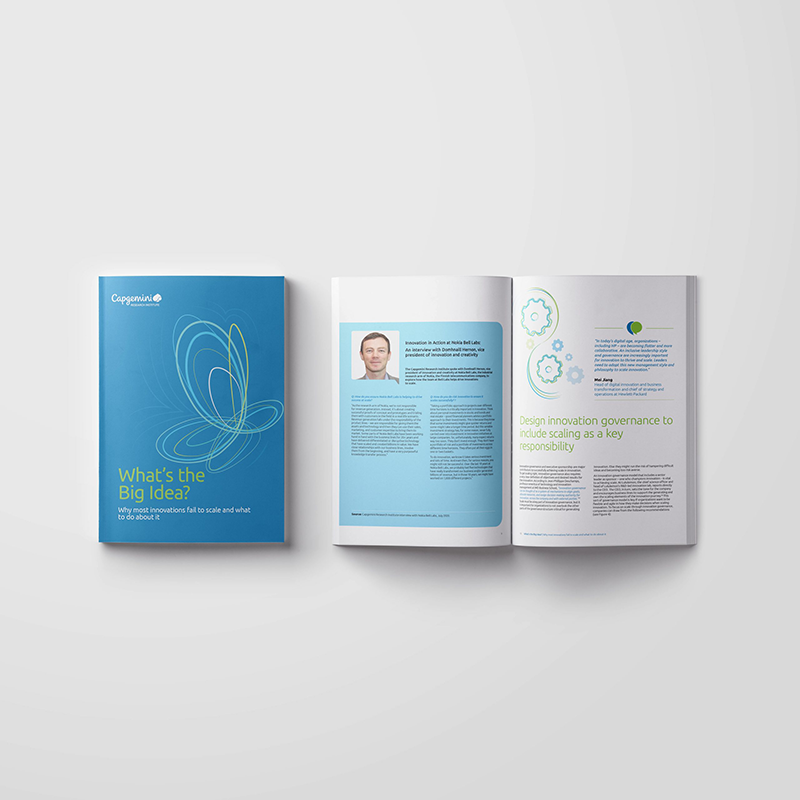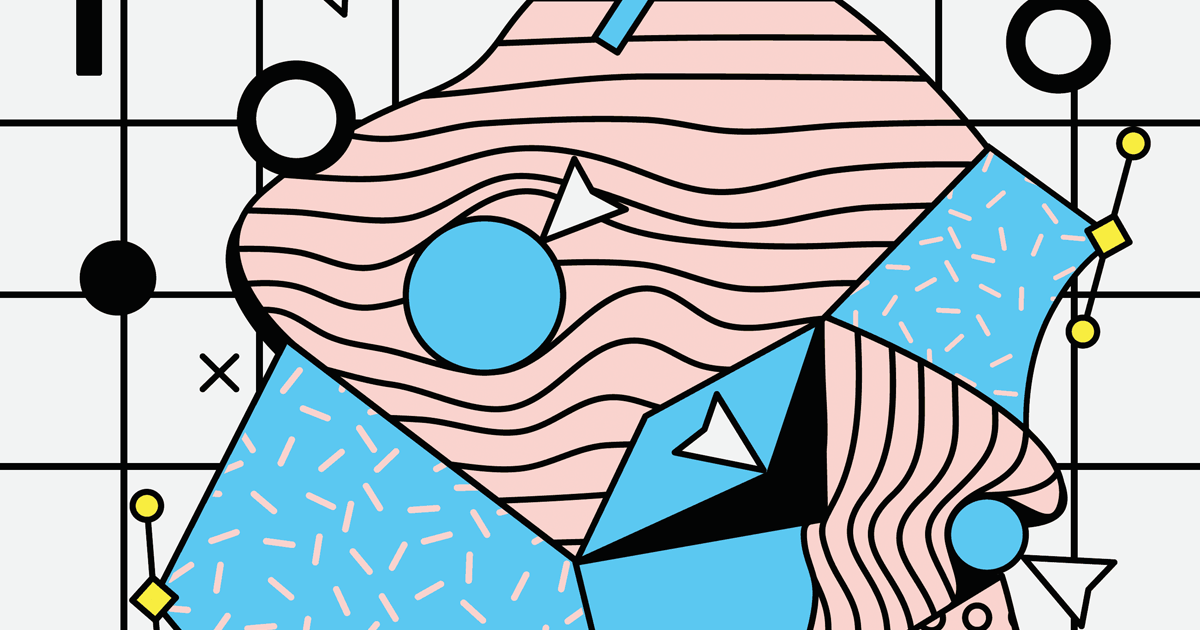
The Changing Face of Design for B2B Companies
When asked to think of design-forward companies, people typically think of consumer-facing businesses in the tech, retail, financial services and perhaps automotive sectors. The design industry perpetuates this image by celebrating consumer gadgets and digital products from well-known consumer brands. But in reality, much of the action has moved into the B2B sector, with some of the most interesting design challenges of the last decade being tackled by and for industrial, manufacturing and technology companies.
As a global strategy and design firm, frog has been part of this revolution in B2B design. Today, B2B projects make up around half of frog’s work. Our designers, technologists and strategists have worked on everything from mining safety products to global logistics systems to IT security equipment, and we want to share some patterns we see across these initiatives.
Dealing with omniscience
While consumer IoT has basically been a bust, connected environments have transformed the ability of manufacturing firms to understand both their factory production processes and how their products are used “in the wild.” By installing sensors on factory floors, oil wells, power plants, airplane engines, ships, trucks, or any other machine, firms can generate rich data that they can use to monitor, manage, maintain and control equipment. The challenge, however, is making sense of it all.
Following the design practices established by the IT world, many people’s first instinct when dealing with mountains of data is to surface it all in dashboards. But in our experience, this approach tends to overwhelm operators and produce a lot of interesting-but-not-useful data snapshots. A better approach is to build data visualizations that reduce the cognitive load of the operator while enhancing their ability to rapidly make decisions. In several frog programs, “speed to decision making” has been the metric we optimize for when designing sophisticated B2B management tools.
Safety and productivity, not aesthetics
Digital tools built by designers look great, but industrial and manufacturing firms don’t invest in design for aesthetics—they invest in design to increase employee productivity while keeping everyone safe. We’ve learned that the same design-thinking methodologies we use on consumer products can be leveraged to develop insights that lead to safer, more productive physical/digital processes and workflows in industrial settings. For example, one project required us to design safety equipment and a control system for a manufacturing environment in which the consequences would be dire if things went wrong. That meant the tools and software needed to be designed in such a way that the next step is always clear, even in stressful emergency situations. The erroneous Hawaii ballistic missile attack warning of 2018 and the Three Mile Island accident of 1979 have both been blamed, at least partially, on bad software design.
A factor that compounds this design challenge is that employee roles can be rather fluid in many industrial environments. For example, a team of frogs conducting ethnographic research in a power station found that when the system “trips,” roles and titles become moot as everyone works together to solve the issue. This stands in contrast to consumer or office environments, in which there are defined user roles (e.g., administrator and user) and we create software to meet the needs of each role. Industrial software design requires the design team to gain a much deeper understanding of the relevant workflows and then design for scenarios rather than designing for user roles.
Pleasing boomers and millennials
Many companies in the industrial and manufacturing sectors have an aging workforce. Older workers have a lot of knowledge about specific tools, plants and systems, so companies want to hold on to them for as long as possible. At the same time, those companies are hiring digital natives who expect industrial and enterprise software to look, feel and act like top-of-the-line consumer apps. This can create a challenging conflict of design interests.
frog’s work with one technology equipment provider exemplifies this challenge. While their technology was very profitable, it was also very old. By today’s standards, its console-and-command-line user interface was far from optimal. New users were put off by the tool’s old school look and feel, and wanted a visual management console as well as mobile app. Power users who had spent years with the system, however, were familiar with the interface, effective at managing it and—like most people—reluctant to change. Our design challenge was to create a system that felt familiar to the power users, but also accessible and appealing to new users. This is a common challenge in operational technology systems, which tend to have 15-20 year product lifecycles, compared to the typical 3-5 years we see in IT.
Design systems
A common entry point for industrial and manufacturing companies looking to compete on design is to establish a design language. A design language distills design principles, aesthetics, interaction patterns and design assets into a system that helps ensure consistency across diverse and complex product ecosystems. The design language is normally supported by a UI toolkit that embodies those principles and patterns for engineering teams responsible for the development and release of products.
While these tools give product teams a tremendous head start in the product realization process, they often fall short of delivering long-term value. Platforms and languages fall out of fashion, and vendor lock-in can make a company captive to a roadmap they have little control over. Having designed and implemented many design language systems, we realized that what they often lack is resiliency and a deeper connection to the rest of the product development lifecycle. As we considered the long-term needs of industrial and manufacturing companies, we looked for ways in which design can be truly embedded into a business.
For firms seeking a more resilient and long-term investment in design, a design system rather than a design language is the solution. A design system is a more comprehensive array of tools, components and workflows that actively unifies business concerns with design processes. The design system acts as the single source of truth for product design and provides a workflow backed by modular tooling that integrates design directly into the product development lifecycle. Design systems are often comprised of design tooling, a design language, UX technology architecture and systems, a UI toolkit, a governance model that allows the business to scale in a controlled way, and task management tools that make it real from day to day. The human element is critical here—finding ways to encourage, motivate and cajole various product teams to use the design system. Carrots are more effective than sticks, and in some industrial companies we have seen communities of design-minded engineers and product managers coalesce around a design system. The modular nature of the system and its continual measurement and improvement allow the business to make changes as required instead of locking themselves into a specific platform vendor.
Once adopted, a design system provides a suite of products that feels consistent, unifies common patterns in order to lower user training costs, and delivers a user experience that is branded and unique to the company.
Design can play a critical role in making industrial, manufacturing and technology firms more competitive. As machines and systems become more sophisticated and IoT connectivity produces dataflows that are hard for operators to digest, thoughtfully designed software will not only increase operator safety and productivity, but become a competitive differentiator. All companies are becoming software makers, which means they need to adopt current software design and development methodologies to remain competitive. At frog, we find some of our most interesting data visualization and software design challenges with our B2B clients, and we welcome the opportunity to push the boundaries of our craft in meaningful ways with industrial and manufacturing clients.

Tim leads a global team of business and product strategists who work alongside frog designers and technologists to bring game changing innovations to market. He has worked in Silicon Valley for 15 years in a variety of product, strategy and marketing roles.

Sonny leads the technology practice at frog San Francisco, focusing on redefining the business value of product experiences. He has helped some of the globe’s most recognizable brands scale the impact of excellent product design, creating Design Systems that are a strategic asset that drives growth and creates operational efficiency.
We respect your privacy
We use Cookies to improve your experience on our website. They help us to improve site performance, present you relevant advertising and enable you to share content in social media. You may accept all Cookies, or choose to manage them individually. You can change your settings at any time by clicking Cookie Settings available in the footer of every page. For more information related to the Cookies, please visit our Cookie Policy.



